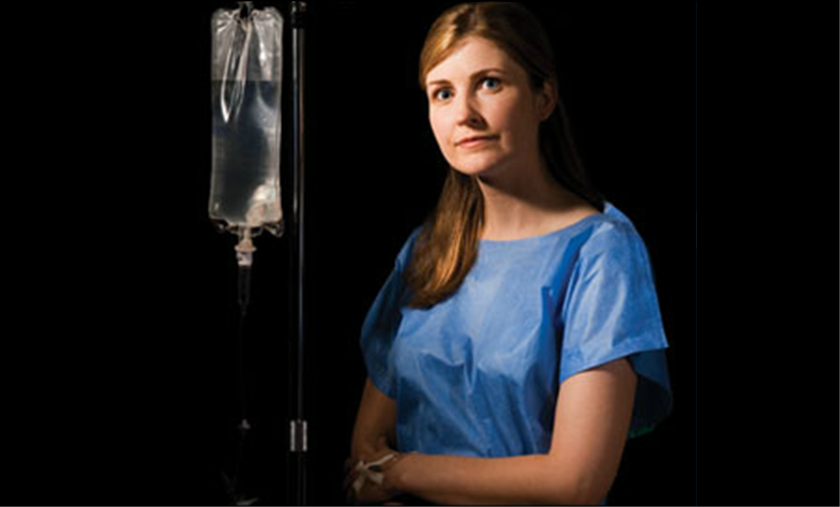What Are HAI's & Can They Be Prevented?
WHAT DOES HAI STAND FOR?
HAI's stands for healthcare-associated infections and they are infections that occur while receiving health care. An estimated 1.7 million Americans each year suffer from an infection they get while in a healthcare facility. Patients with medical devices (central lines, urinary catheters, ventilators) or who undergo surgical procedures are unfortunately at risk of acquiring HAIs.
In an already germ infested world, HAIs continue to be a huge issue today. On any given day, about one in 31 hospital patients has at least one healthcare associated infection, according to the CDC. These infections can have devastating emotional, financial, and medical effects on both the patient and the facility. Worst of all, they can be deadly. HAIs occur in all types of care settings, including:
• Acute care hospitals
• Ambulatory surgical centers
• Dialysis facilities
• Outpatient care (e.g., physicians' offices and health care clinics)
• Long-term care facilities (e.g., nursing homes and rehabilitation facilities)
Cross-contamination is the Number One Source of Healthcare Associated Infections
HAI’s ARE EASILY PREVENTABLE
Healthcare procedures and settings can leave you vulnerable to germs that cause HAIs but don’t fret it, research suggests that many healthcare acquired infections are preventable. Germs are often spread in healthcare settings from patient to patient on the unclean hands of healthcare personnel or through the improper use or reuse of equipment. Infection prevention starts with the basics.
Hand Hygiene to Prevent HAIs
HAI prevention starts with proper hand hygiene. It is the most important, easiest, and least expensive means of reducing the prevalence of HAIs. When approaching hand hygiene, the WHO defines 5 critical moments when healthcare workers should perform hand hygiene.
• Before touching a patient
• Before clean/aseptic procedures
• After body fluid exposure/risk
• After touching a patient
• After touching patient surroundings
Practice good Infection Prevention by combating the cross-contamination of germs and bacteria with proven and reliable hand sanitizers, alcohol based hand wipes and antibacterial hand soap!
Environmental Hygiene to Prevent HAIs
Occasionally, the healthcare environment or setting is a primary source of germs. Contaminated hospital surfaces play an important role in transmitting micro-organisms, including Clostridium difficile, and multidrug-resistant organisms such as methicillin-resistant Staphylococcus aureus (MRSA) and vancomycin-resistant enterococci (VRE). Therefore, appropriate cleaning and disinfection of surfaces and equipment which patients and healthcare personnel touch is critical to reduce exposure.
Practice good Infection Control by combating the cross contamination of germs and bacteria with proven and reliable EPA registered surface disinfectants wipes and disinfectant spary cleaners.
Protective Gear
The importance of single-use gloves, protective masks or surgical respirators, disposable isolation gowns and other personal protective gear or apparel cannot be overestimated in preventing infection in healthcare settings. Gloves reduce hand contamination by 70 percent to 80 percent, prevent cross–contamination and protect patients and healthcare personnel from infection. They, along with hand hygiene, are the first line of defense in preventing the spread of infection from person to person within healthcare settings.
Following best practices is a critical step in preventing the spread of Healthcare-Associated Infections (HAIs) among patients and visitors. It's more important than ever for clinicians to be equipped with proper protective apparel, disinfectants and follow hand hygiene training. And, used appropriately, the right gloves, gowns, and masks greatly reduce the spread of HAIs, as well as protect healthcare workers from contamination and infections.
Reducing the risk of infection is easy! Always practice proper hand hygiene, wear the proper protective gear and keep surfaces clean and disinfected! Now all you need to do is ...
+shop MDS Associates now
Orders. Questions. Volume Discounts. Special Requests.
Click or Call Today
Monday - Friday 8:30am - 4:30pm EST
+800.274.4637 | +716.668.4001 | Fax +716.668.4496 | [email protected] | MDSassociates.com
"We want you to return home safely every day"



